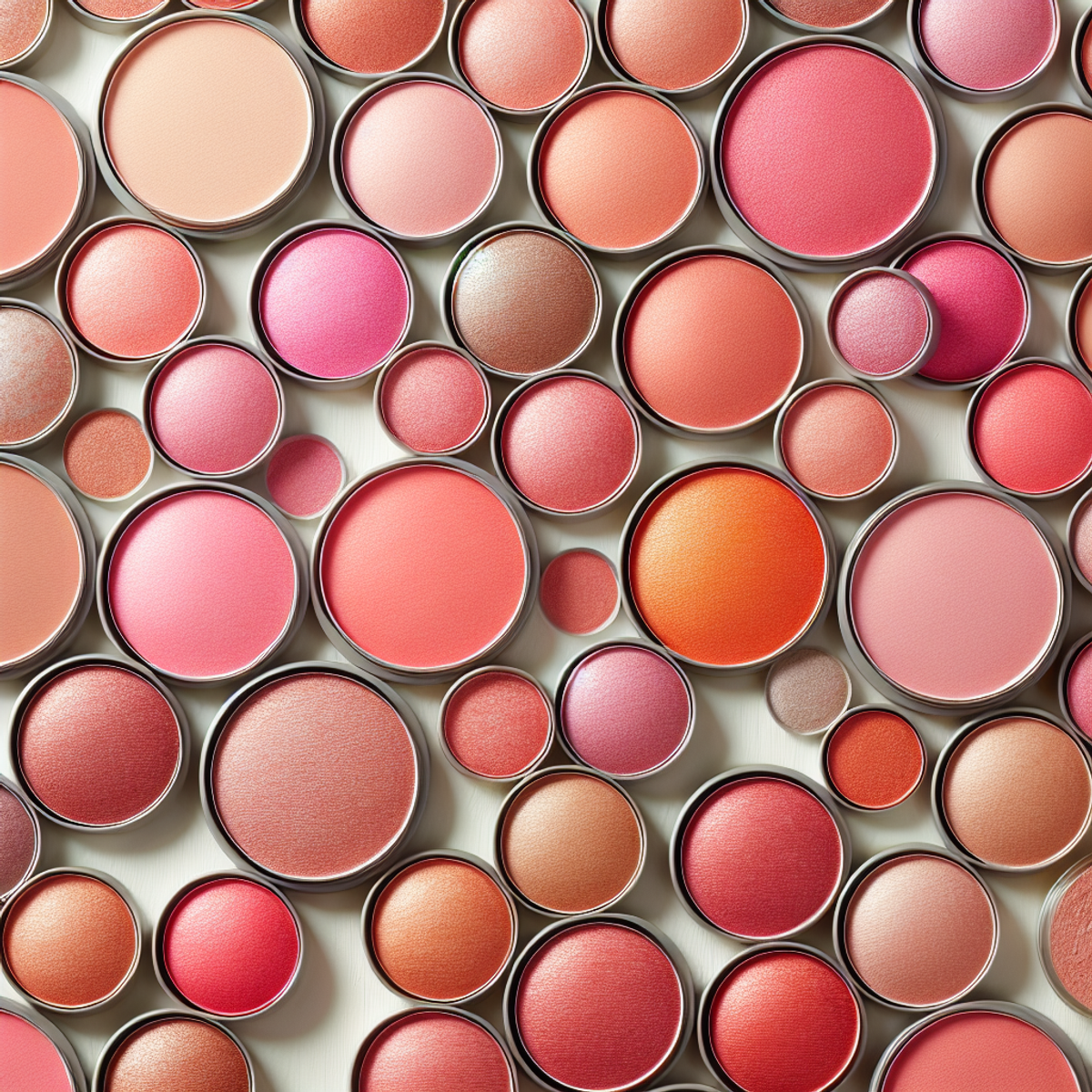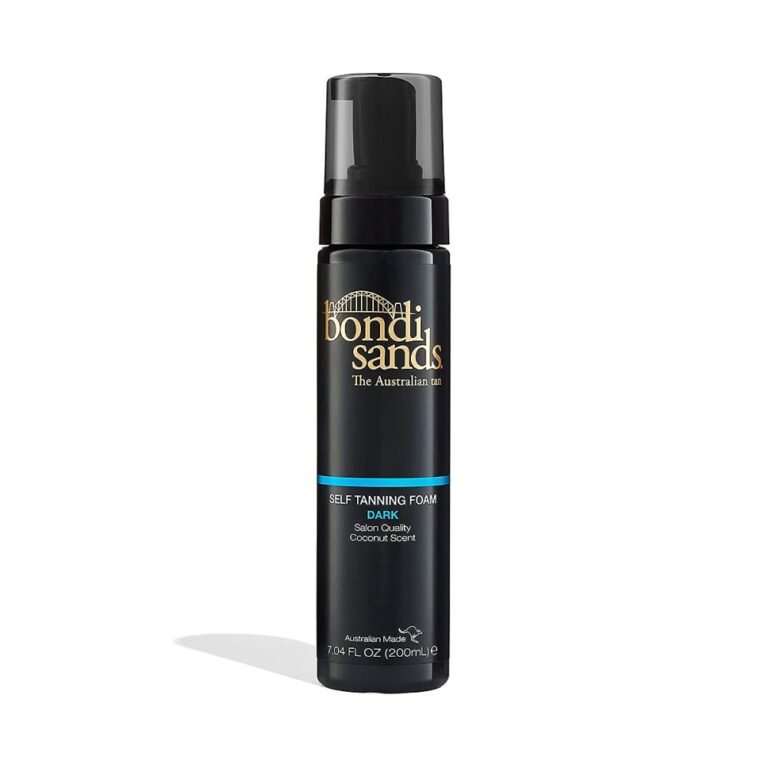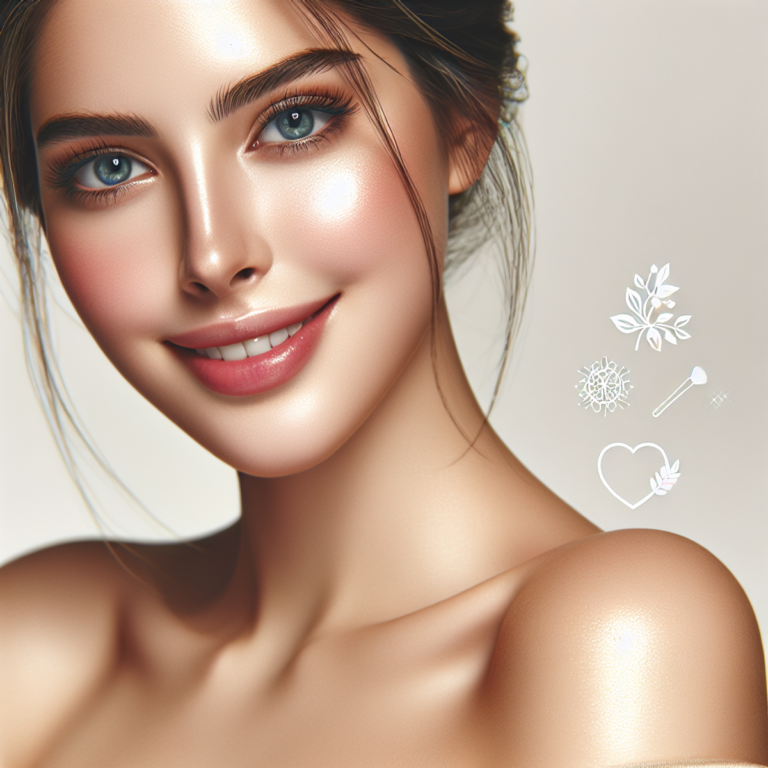How to Find the Best Blush Color for Your Skin Tone

Introduction
Blush is a makeup essential that can instantly enhance your complexion and add a healthy flush of color to your cheeks. However, choosing the right blush shade for your skin tone is crucial to achieve a natural and flattering look. In this article, we will guide you on how to find the best blush color based on your skin tone and undertones, ensuring that you always achieve a beautiful and seamless finish.
Blush has the power to brighten up your face, giving you a youthful and radiant appearance. By adding a touch of color to your cheeks, it can create the illusion of a healthy glow from within. But here’s the catch: not all blush shades work well with every skin tone. Just like foundation or lipstick, finding the perfect blush color for your complexion is essential for a polished makeup look.
The key takeaway from this article is that understanding your skin tone and undertones is crucial in selecting the best blush color. Skin tones can be categorized as fair, medium, olive, or dark, while undertones can be cool, warm, or neutral. By considering both factors, you can narrow down the options and choose a blush shade that complements your unique complexion.
To help you navigate through the vast array of blush colors available in the market, we will provide detailed recommendations for each skin tone category:
- Fair skin
- Medium skin
- Olive skin
- Dark skin
Whether you have fair skin with cool undertones or dark skin with warm undertones, we’ve got you covered. We’ll also discuss placement techniques to achieve different effects with blush application and offer tips on testing and experimenting with different shades.
In the world of makeup, there are no hard rules set in stone. While guidelines can be helpful in finding your perfect blush color, it’s important to remember that personal preference plays a significant role. Ultimately, you should wear whatever blush color makes you feel confident and beautiful.
So let’s dive into the world of blush and explore how to find the best shade for your skin tone and undertones. Get ready to embrace blush as a versatile tool for self-expression and have fun discovering the endless possibilities it offers in enhancing your unique features.
Understanding Skin Tones, Undertones, and Their Role in Blush Color Selection
To find the best blush color for your skin tone, it’s important to understand the different categories of skin tones (fair, medium, olive, dark) and how undertones (cool, warm, neutral) work within each skin tone category. Both factors play a crucial role in determining the perfect blush shade that will enhance your complexion.
Determining Your Skin Tone and Undertones
Before diving into blush color selection, it’s helpful to determine your own skin tone and undertones. Here are a few simple methods you can use:
- Vein Examination: Look at the veins on your wrist or inner arm in natural light. If they appear blue or purple, you likely have cool undertones. If they appear greenish, you likely have warm undertones. If you can’t clearly distinguish between blue or green, you may have neutral undertones.
- Jewelry Testing: Pay attention to whether gold or silver jewelry suits you better. If gold enhances your complexion, you likely have warm undertones. If silver looks more flattering on you, you likely have cool undertones. If both metals look equally good on you, you may have neutral undertones.
Understanding your skin tone and undertones will help guide you in selecting the most flattering blush color for your complexion.
Blush Colors for Different Skin Tones and Undertones
Now that we have a basic understanding of skin tones and undertones, let’s explore the best blush colors for each category:
- Fair Skin: Fair skin with cool undertones benefits from soft, cool-toned pinks such as light pink blushes. These shades work harmoniously with fair skin that has hints of blue or pink undertones. They provide a subtle flush of color without overpowering the complexion.
- Medium Skin: Medium skin tones often have a balanced mix of warm and cool undertones, making them versatile when it comes to blush color selection. Rosy pinks are particularly flattering for medium skin tones as they add a healthy flush to the cheeks. Consider shades that combine peach and pink tones for a natural-looking glow.
- Olive Skin: Olive skin tones often have greenish undertones, so it’s important to choose blush shades that complement this unique complexion. Orangey-peach blushes with a touch of warmth can beautifully enhance the natural radiance of olive skin. Golden-toned blushes can also provide a subtle, sun-kissed effect.
- Dark Skin: Dark complexions with warm undertones can make a statement with richly pigmented blush shades. Coral blushes bring a vibrant pop of color to the cheeks and flatter deep skin tones. Deep reds and berry hues also work well for adding depth and intensity to the complexion.
Remember that these are just general guidelines, and there is no one-size-fits-all approach to blush color selection. It’s essential to consider your individual preferences and experiment with different shades to find what suits you best.
By understanding your skin tone and undertones, you can confidently choose blush colors that will enhance your natural beauty and achieve a flattering and natural-looking flush of color on your cheeks.
Best Blush Colors for Each Skin Tone
When it comes to finding the perfect blush color for your skin tone, understanding the undertones of your complexion is crucial. In this section, we will explore the best blush colors for different skin tones, including fair skin with cool undertones, medium skin, olive skin, and dark skin.
1. Blush Colors for Fair Skin with Cool Undertones (e.g., Light Pink Blush)
Fair skin with cool undertones often has hints of blue or pink. To enhance this delicate complexion, opt for soft, cool-toned pinks that work harmoniously with the natural undertones of fair skin. Here are some blush shades that are perfect for fair skin with cool undertones:
- Light Pink: This classic blush shade adds a subtle flush of color to fair skin and complements its cool undertones beautifully. Look for light pink blushes with a hint of blue or lavender undertones for a natural and flattering look.
- Peach: Peach blushes with cool undertones can also work well on fair skin. They add warmth to the complexion while still maintaining a fresh and natural appearance.
- Berry: For a slightly bolder look, berry blushes can provide a lovely contrast against fair skin with cool undertones. These shades add depth and dimension to the cheeks while still looking natural and effortless.
Remember to apply blush sparingly on fair skin to avoid overpowering your complexion. A light touch will give you a subtle and flattering flush of color.
2. Blush Colors for Medium Skin Tones (e.g., Rosy Pink Blush)
Medium skin tones often have a balanced mix of warm and cool undertones. When it comes to blush colors, rosy pinks are an excellent choice as they add a healthy flush to the cheeks without overpowering the complexion. Here are some blush shades that work well on medium skin tones:
- Rosy Pink: This versatile shade complements the natural warmth of medium skin tones while enhancing the complexion with a touch of pink. Look for rosy pinks that have a balance of warm and cool undertones to ensure a flattering and natural-looking flush.
- Peachy Pink: For a softer and warmer look, opt for peachy pinks that have a hint of pink undertones. These shades add warmth to the cheeks and create a natural glow on medium skin tones.
- Mauve: Mauve blushes with a mix of pink and purple undertones can also be stunning on medium skin. They provide a subtle pop of color that adds dimension to the complexion without being too overpowering.
When applying blush on medium skin, focus on the apples of your cheeks and blend it outwards for a seamless and radiant finish.
3. Blush Colors for Olive Skin Tones (e.g., Orangey-Peach Blush)
Olive skin tones often have greenish undertones, making it important to choose blush colors that complement this unique complexion. Shades with a touch of warmth, such as orangey-peach or golden-toned blushes, can beautifully enhance olive skin. Here are some blush shades to consider:
- Orangey-Peach: These shades add warmth and radiance to olive skin tones, creating a healthy and sun-kissed appearance. Look for blushes with subtle orange undertones that complement the natural warmth of your complexion.
- Golden-Toned: Blushes with golden undertones can also complement olive skin beautifully. These shades add a luminous glow to the cheeks and enhance the natural radiance of your complexion.
- Terracotta: For a more earthy and natural look, terracotta blushes can be an excellent choice for olive skin tones. These warm-toned shades add depth and definition to the cheeks, creating a subtle yet impactful effect.
When applying blush on olive skin, focus on the apples of your cheeks and blend it outward for a seamless and natural-looking finish.
4. Blush Colors for Dark Skin Tones (e.g., Coral Blush, Red Blush)
Dark skin tones often have warm undertones that can beautifully complement richly pigmented blush shades. To make a statement with your blush, consider vibrant hues such as coral, red, and berry. Here are some blush shades that work well on dark skin tones:
- Coral: Coral blushes add a beautiful warmth and vibrancy to dark skin tones. Look for shades that have a mix of orange and pink undertones to create a flattering and radiant effect.
- Red: Deep red blushes can be stunning on dark complexions with warm undertones. These bold shades create a striking contrast against the skin and add a touch of drama to your makeup look.
- Berry: For a more sophisticated look, berry blushes with rich purple or burgundy undertones can be an excellent choice for dark skin tones. These shades provide depth and intensity to the complexion while still looking elegant and refined.
Remember to build up the intensity of your blush gradually on dark skin tones to achieve the desired effect without overpowering your features.
Finding the right blush color for your skin tone is all about enhancing your natural beauty and choosing shades that complement your undertones. Experiment with different colors and textures to discover what works best for you. And always remember, there are no hard rules in makeup—wear whatever blush color makes you feel confident and beautiful!
2. Blush Colors for Medium Skin Tones (e.g., Rosy Pink Blush)
Medium skin tones have a balanced mix of warm and cool undertones, which means there are plenty of blush options that will look great. One classic choice for medium skin is rosy pink blush.
- Rosy pink blush adds a natural and youthful glow to medium skin tones.
- It complements the warmth of the skin without being too overpowering.
- The subtle touch of pink creates a soft and flattering effect.
Tip: Don’t limit yourself to just rosy pink! While it’s a popular choice, there are other shades you can explore based on your undertones:
- If you have warmer undertones, try out peachy blushes that enhance the golden hues in your skin.
- If you have cooler undertones, experiment with berry-toned blushes for a beautiful contrast against your complexion.
Makeup is all about self-expression, so feel free to play around with different shades and find what makes you feel confident and beautiful.
3. Blush Colors for Olive Skin Tones (e.g., Orangey-Peach Blush)
When it comes to olive skin tones, finding the right blush color can enhance the natural warmth and radiance of your complexion. While there are general recommendations for olive skin tones and their undertones, it’s essential to remember that experimenting with different shades allows you to express your personal style and preferences.
1. Exploring Peachy Tones
Olive skin tones often have greenish undertones that benefit from peachy tones with a touch of warmth. The subtle infusion of warmth in peachy blush shades complements the natural greenish hues present in olive skin. This combination creates a harmonious and flattering effect that accentuates the unique beauty of olive skin.
2. Golden-Toned Blush
Another fantastic option for olive skin tones is a golden-toned blush. This shade adds a beautiful luminosity to the skin while complementing the warm undertones commonly found in olive complexions. The golden shimmer in the blush can further enhance the natural glow of olive skin, creating a radiant and sun-kissed look.
Experimenting with various shades within the peach and golden-toned spectrum allows individuals with olive skin to discover the nuances that best suit their preferences and desired makeup looks. While these suggestions serve as initial guidelines for choosing blush colors for olive skin tones, there is ample room for personal exploration and creativity when selecting the perfect shade.
“By embracing experimentation and venturing beyond traditional recommendations, individuals can curate a collection of blush shades that cater to different moods, occasions, and styles.”
4. Blush Colors for Dark Skin Tones (e.g., Coral Blush, Red Blush)
Coral and deep red blush shades are perfect for dark skin tones with warm undertones. They have intense pigmentation that can create a striking look. These vibrant colors beautifully enhance the deep complexion, giving it a warm and radiant glow. While these suggestions work well in most cases, feel free to try out other shades that match your personal style and preferences.
Enhancing Your Blush Application: Placement Techniques for Different Effects
When it comes to blush application, the placement of the product on your cheeks can make a significant difference in achieving your desired look. Whether you want a natural flush or a bold pop of color, understanding placement techniques can help you enhance the effect of your blush. Here are some tips to consider:
1. Natural Look:
For a subtle, natural-looking flush, focus on applying blush to the apples of your cheeks. Smile to locate the roundest part of your cheeks, and lightly dust the blush in a circular motion on this area. This technique creates a youthful and fresh appearance, mimicking a natural flush.
2. Contoured Look:
If you desire a more defined and contoured look, consider using blush to sculpt your cheekbones. To achieve this effect, apply the blush just below your cheekbones, starting from the temples and blending towards the center of your cheeks. This technique adds dimension and structure to your face, creating a chiseled appearance.
3. Dewy Look:
For a radiant and dewy finish, try applying blush to the high points of your cheeks. Start by identifying the highest point of your cheekbones and gently blend the blush upward towards your temples. This technique gives your skin a luminous glow and enhances its natural radiance.
4. Draping Technique:
The draping technique involves sweeping blush across both the apples of your cheeks and upper cheekbones, creating a more dramatic effect. To achieve this look, apply a slightly deeper shade of blush along your cheekbones and blend it with a lighter shade on the apples of your cheeks. This technique adds depth and dimension to your face, resulting in an elegant and sophisticated appearance.
While these placement techniques can help you achieve different effects with blush application, it’s essential to exercise caution and avoid over-applying the product. Blush should enhance your natural features, not overpower them. Start with a light hand and build the color gradually, ensuring a seamless blend for a natural-looking result.
Tip: Makeup is an art form, and experimenting with different techniques can be fun and empowering. Don’t be afraid to try new placement methods or mix different blush shades to create your unique look. The key is to find what works best for you and makes you feel confident and beautiful.
To further enhance your blush application, consider using the right tools:
- A fluffy blush brush allows for precise application and seamless blending.
- Using a light hand and tapping off any excess product before applying can help control the intensity of the color.
As you continue to explore different blush placement techniques, remember that rules in makeup are meant to be broken. While these guidelines are helpful starting points, feel free to adapt and modify them according to your preferences and personal style. After all, makeup is an expression of individuality and creativity.
The Importance of Testing and Experimenting with Blush Colors
When it comes to finding the best blush color for your skin tone, it’s crucial to take the time to test and experiment with different shades. While guidelines and recommendations can be helpful, everyone’s complexion is unique, and what works for one person may not work for another. Here are a few reasons why testing and experimenting with blush colors is so important:
1. Blush colors can appear differently on your skin
Blush colors can look vastly different in the pan compared to how they appear on your skin. Factors such as undertones, pigmentation, and formula can all affect how a blush shade translates onto your complexion. By swatching blushes directly on your skin, you’ll be able to see how they interact with your natural undertones and determine if they complement your complexion.
2. Finding the best match for your complexion
With the wide array of makeup brands and blush shades available, finding the best match for your complexion can be overwhelming. Swatching different blush colors allows you to compare them side by side and assess which ones enhance your features and provide a natural-looking flush of color. It also gives you the opportunity to choose between different finishes such as matte or shimmer, depending on your personal preference.
3. Stepping out of your comfort zone
While it’s easy to stick with blush shades that we’re familiar with or that seem safe, stepping out of our comfort zone can lead to exciting discoveries. Don’t be afraid to try blush shades that you may not typically gravitate towards. You might be surprised at how certain colors can brighten up your complexion or give you a unique and flattering glow. Experimenting with different shades can help you find new favorites and expand your makeup repertoire.
4. Adapting to different makeup looks
Having a variety of blush shades in your collection allows you to adapt to different makeup looks and occasions. For a natural, everyday look, you might prefer a soft and subtle blush color that adds a hint of color to your cheeks. On the other hand, for special events or evening makeup, you might opt for a bolder and more vibrant blush shade to create a statement look. By testing and experimenting with different blush colors, you can build a collection that caters to all your makeup needs.
5. Confidence in your choices
By taking the time to test and experiment with different blush shades, you’ll gain confidence in your ability to choose the best color for your skin tone. You’ll become more familiar with how different undertones and finishes work with your complexion, making it easier to select the perfect blush shade every time. This confidence will translate into your overall makeup routine, allowing you to experiment with different looks and techniques without hesitation.
Testing and experimenting with blush colors is essential for finding the best match for your complexion. By swatching different shades on your skin, you can see how they interact with your undertones and determine which ones enhance your features. Don’t be afraid to step out of your comfort zone and try new colors – you might be pleasantly surprised by the results! Building a diverse collection of blush shades allows you to adapt to different makeup looks and occasions while boosting your confidence in choosing the perfect blush color every time. So go ahead and have fun exploring the endless possibilities that blush offers in enhancing your unique features!
Final Tips for Finding Your Perfect Blush Color
When it comes to finding the best blush color for your skin tone, it’s essential to have a versatile collection that caters to different makeup looks and occasions. Here are some final tips to help you discover your perfect blush color:
1. Build a Versatile Collection
Consider investing in a small collection of blushes in various shades that complement your skin tone. This will allow you to create diverse makeup looks, from natural and everyday to bold and glamorous. Having options on hand ensures that you can effortlessly adapt your blush to different outfits, moods, and events.
2. Embrace Variety
Don’t limit yourself to one blush shade that you consider as the “perfect match.” Embrace the opportunity to experiment with different hues and finishes. While you may have a go-to blush for everyday wear, exploring other shades can lead to delightful discoveries. You might find that certain colors beautifully enhance specific features or bring out different undertones in your complexion.
3. Consider Different Formulas
In addition to exploring various shades, consider trying different blush formulas such as powder, cream, or liquid. Each formula offers a unique finish and texture that can complement specific makeup looks or skin types. For instance, powder blushes are excellent for oily skin, while cream blushes provide a dewy finish ideal for dry skin.
4. Seek Professional Advice
If you’re uncertain about which blush colors suit you best, don’t hesitate to seek advice from professional makeup artists at beauty counters or makeup stores. They can offer personalized recommendations based on your skin tone, undertones, and desired makeup looks.
5. Adapt to Seasonal Changes
Keep in mind that your ideal blush color may vary with seasonal changes in your skin tone. For instance, you may prefer lighter, softer shades during the winter months and opt for brighter or bolder hues in the summer. As your skin tone fluctuates with sun exposure or changes in climate, be open to adjusting your blush collection accordingly.
By following these final tips, you can curate a diverse selection of blush colors tailored to your unique preferences and needs. Remember that makeup is an art form that allows for creativity and self-expression, so have fun exploring the endless possibilities of blush shades!
Conclusion
- While guidelines are helpful, there are no hard rules in makeup, and you should ultimately wear whatever blush color makes you feel confident and beautiful.
- Embrace blush as a versatile tool for self-expression, and have fun exploring the endless possibilities it offers in enhancing your unique features.










